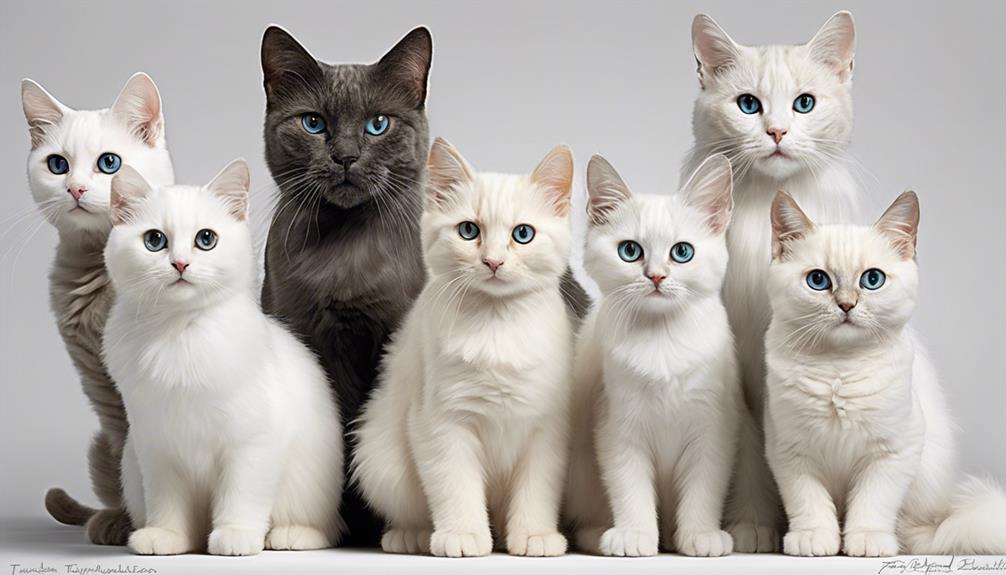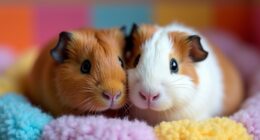Feeding your cat a raw diet offers numerous advantages for their health. This includes improving their overall well-being, helping with weight control, promoting dental health, skin condition, joint support, strengthening the immune system, and even enhancing behavioral improvements. Raw cat food is a crucial option for ensuring your feline friend receives proper nutrition. All of these aspects contribute to a happier and healthier cat. Switching to a raw diet is a smart choice for your pet’s overall well-being and vitality.
Key Takeaways
- Raw cat food supports weight management with high protein and low carbs.
- Improves dental health by reducing plaque buildup naturally.
- Enhances skin and coat condition with essential nutrients and fatty acids.
- Boosts joint health with omega-3 fatty acids and glucosamine.
- Strengthens the immune system with antioxidants and essential nutrients.
Health Benefits of Raw Cat Food
Feeding my cat raw food has noticeably improved their overall health and well-being. Switching to a raw diet has been transformative. The high protein content and low carbohydrate levels in raw cat food have helped my feline friend maintain a healthy weight effortlessly. Not only that, but their digestion has improved significantly, leading to better toilet habits.
I've also observed a positive change in their oral health – their teeth and gums are in top shape. Additionally, their skin and coat have never looked better since starting this diet. Shedding has reduced, and hairballs are now a rare occurrence.
What's even more remarkable is the increase in my cat's energy levels. They seem more vibrant and playful than ever before. Their cognitive and emotional well-being have also seen a boost. It's truly incredible how much raw food has enhanced my cat's overall health.
Nutritional Advantages of Raw Feeding
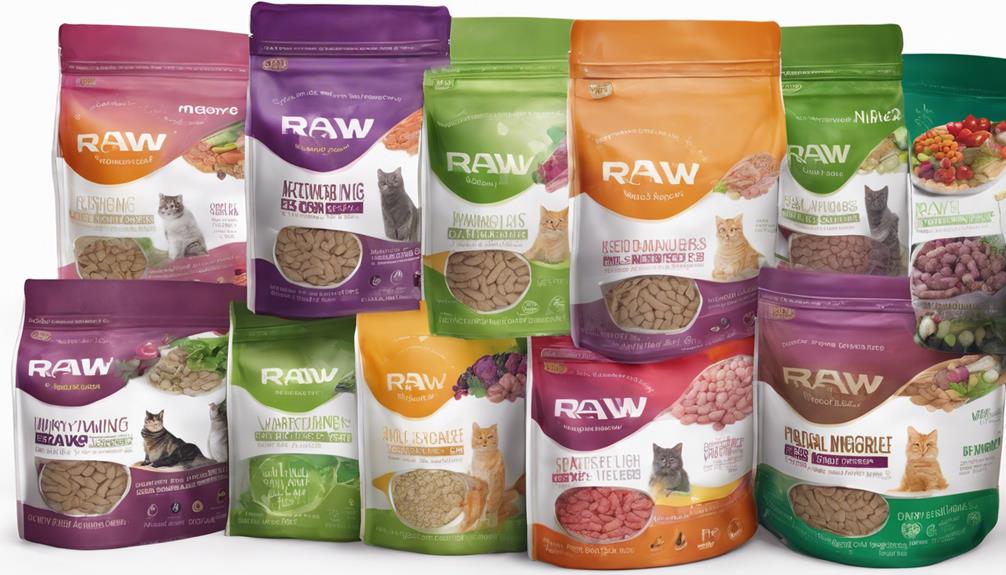
Switching my cat to a raw diet hasn't only transformed their health but also provided numerous nutritional advantages that support their overall well-being. Here are some key benefits of feeding cats a raw diet:
1) Biologically Appropriate Diet: Raw cat food aligns with what cats would naturally eat in the wild, ensuring they receive the necessary nutrients for best health.
2) Rich in Essential Nutrients: Raw cat food contains essential nutrients like taurine, important for feline health and wellbeing.
3) Organ Meats for Vitamins and Minerals: Including organs in raw cat food provides a natural source of essential vitamins and minerals, supporting overall health.
4) Raw Bones for Calcium: Raw bones in cat food offer a digestible and natural source of calcium, important for maintaining healthy bones in cats.
Feeding cats a raw diet not only mirrors their natural dietary needs but also helps them thrive by providing a well-rounded source of essential nutrients for their overall health and vitality.
Raw Diet for Feline Dental Health
Raw cat food plays a crucial role in promoting ideal feline dental health by reducing plaque and tartar buildup on teeth. The act of chewing on raw bones included in the diet not only provides essential nutrients but also acts as a natural toothbrush, helping to clean teeth and massage gums. These benefits, coupled with the natural enzymes present in raw food, contribute to better oral hygiene for our feline friends.
By incorporating a raw diet, cats can enjoy improved dental health, leading to fresher breath and overall better oral care. Additionally, raw diets support healthy gums and help prevent periodontal disease, a common issue in cats.
Taking care of our cats' dental health through a raw food diet not only enhances their overall well-being but also guarantees they maintain strong teeth and gums for years to come.
Raw Food for Weight Management

When it comes to weight management for our feline friends, raw cat food offers significant advantages. High-quality protein in raw diets supports lean muscle mass, helping to regulate weight effectively.
Additionally, the low carbohydrate content aids in preventing obesity and promoting overall well-being.
Weight Control Benefits
By providing high-quality protein that supports lean muscle mass, raw cat food offers effective weight management benefits. Here are some key reasons why raw cat food can help control your feline friend's weight:
- High-Quality Protein: Supports lean muscle mass, essential for a healthy weight.
- High Moisture Content: Helps cats feel full and satisfied, aiding in weight control.
- Lower in Carbohydrates: Reduces the risk of weight gain and obesity.
- Prevents Weight Gain: Raw diets can prevent excess weight by providing a balanced and natural diet.
Feeding your cat raw food can lead to better weight control compared to processed diets, promoting overall health and well-being.
Nutrient Absorption Advantages
Enhancing nutrient absorption through raw cat food consumption contributes significantly to effective weight management for felines. The high-quality proteins found in raw diets are easily digestible, supporting cats in maintaining a healthy weight.
By providing essential nutrients in their natural form, raw food plays an important role in ensuring ideal weight and body condition for our beloved pets. Compared to processed diets, feeding raw cat food can help cats manage their weight more efficiently.
The nutrient-rich elements in raw cat food also boost metabolism and enhance energy utilization, further aiding in weight management. Choosing raw food for our feline companions not only benefits their digestion but also promotes overall well-being by helping them achieve and maintain a healthy weight.
Raw Diet for Digestion Support
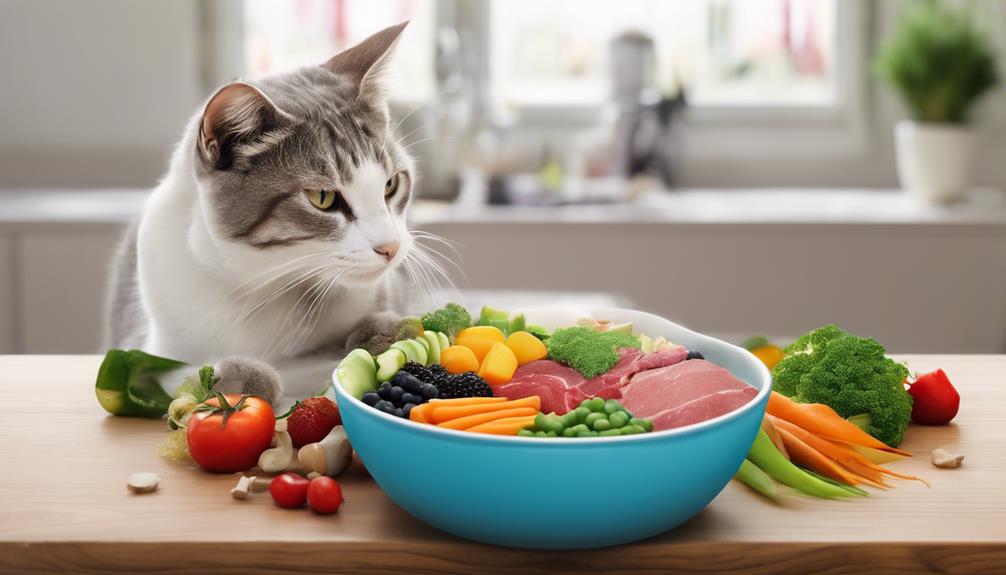
Feeding raw cat food is a beneficial way to support digestion in felines due to its high protein content that mirrors their natural diet. Here are some reasons why a raw diet can help improve your cat's digestive health:
- Optimal Gut Health: The absence of grains in raw cat food diets can reduce digestive issues and promote a healthy gut environment for your feline friend.
- Efficient Digestion: Raw food diets often lead to smaller, less frequent stools, indicating that your cat is efficiently digesting and absorbing nutrients from their food.
- Alleviation of Food Sensitivities: High-quality ingredients in raw cat food can help alleviate digestive problems such as food sensitivities and allergies, making mealtime more comfortable for your cat.
- Supports Digestive Function: The natural enzymes present in raw cat food aid in the breakdown of nutrients, supporting overall digestive function and ensuring that your cat gets the most out of their meals.
Benefits for Skin and Coat
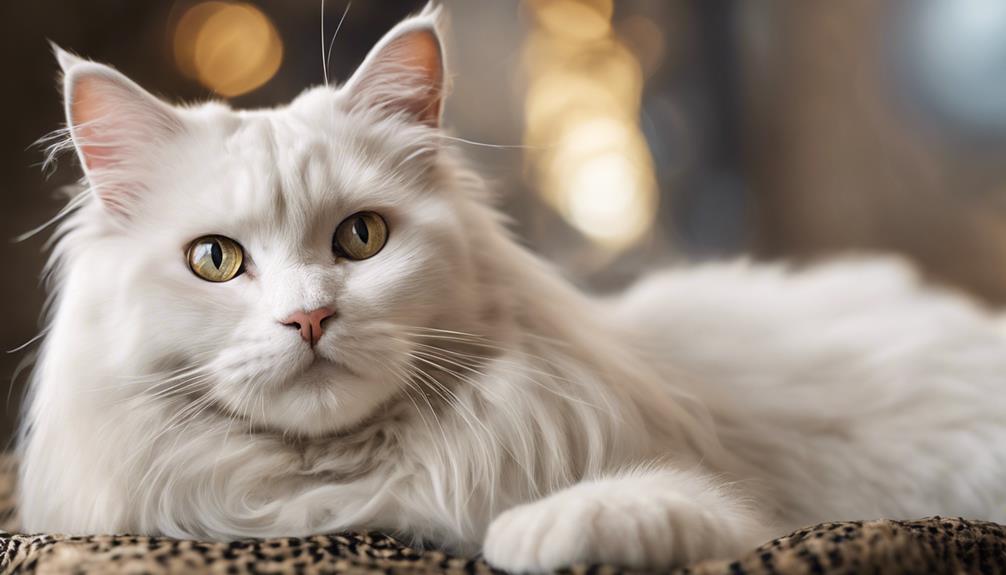
Raw cat food can greatly enhance the health of a feline's skin and coat by preserving natural vitamins and minerals essential for their well-being. Feeding your cat a biologically appropriate diet like raw food can lead to healthy skin and a shiny coat.
The vital fatty acids present in raw cat food play an important role in promoting a glossy and lustrous coat that you'll love to run your fingers through. Not only does a raw diet contribute to a beautiful exterior, but it can also reduce shedding, keeping your home cleaner and your kitty more comfortable.
Additionally, omega-3 fatty acids in raw cat food help maintain a healthy skin barrier, reducing inflammation and potential skin issues. By opting for raw food, you're not just providing a meal – you're investing in your cat's overall skin health, ensuring they look and feel their best every day.
Raw Food for Joint Health

Raw cat food offers significant benefits for joint health, including improved function and mobility. The natural nutrients in raw diets such as collagen and cartilage support healthy joints in cats.
Additionally, omega-3 fatty acids present in raw food help reduce inflammation, promoting overall joint comfort and flexibility.
Joint Health Benefits
Supporting joint health in cats, raw food diets offer essential nutrients such as omega-3 fatty acids and glucosamine. These nutrients play an important role in maintaining healthy joints and preventing issues like arthritis.
Here are some ways raw cat food benefits joint health:
- Omega-3 fatty acids reduce inflammation in joints, enhancing mobility and flexibility.
- Glucosamine helps in the upkeep of cartilage and joint function, especially beneficial for older cats.
- The natural ingredients in raw food support overall joint health, aiding in preventing arthritis and joint degeneration.
- Regular consumption of raw cat food can lead to improved comfort, mobility, and quality of life for our feline friends.
Raw Diet Advantages
Improving feline well-being through a nutrient-rich diet is essential for maintaining ideal joint health. Raw cat food diets offer significant advantages for joint health, thanks to nutrients like omega-3 fatty acids and glucosamine. These components play an important role in reducing inflammation in joints, which can enhance mobility and comfort for cats.
Glucosamine, specifically found in raw diets, supports joint cartilage health, ultimately improving overall joint function. For cats dealing with arthritis or joint issues, the anti-inflammatory properties of certain ingredients in raw diets can be particularly beneficial.
Improved Joint Function
My cat's joint health greatly benefits from the nutrient-rich raw diet, especially through the support of essential nutrients like omega-3 fatty acids. Here are four ways raw feeding aids in improving joint function:
- Omega-3 Fatty Acids: Found abundantly in raw diets, these acids reduce inflammation, easing joint pain.
- Anti-Inflammatory Properties: Raw ingredients help decrease joint inflammation, enhancing mobility.
- Muscle Development: High-quality proteins in raw food support muscle strength, aiding in joint stability.
- Glucosamine and Chondroitin: These natural components in raw diets promote joint health and mobility, reducing the risk of joint issues.
Feeding my cat a raw diet guarantees her joints stay healthy, active, and pain-free.
Immune System Support With Raw Feeding
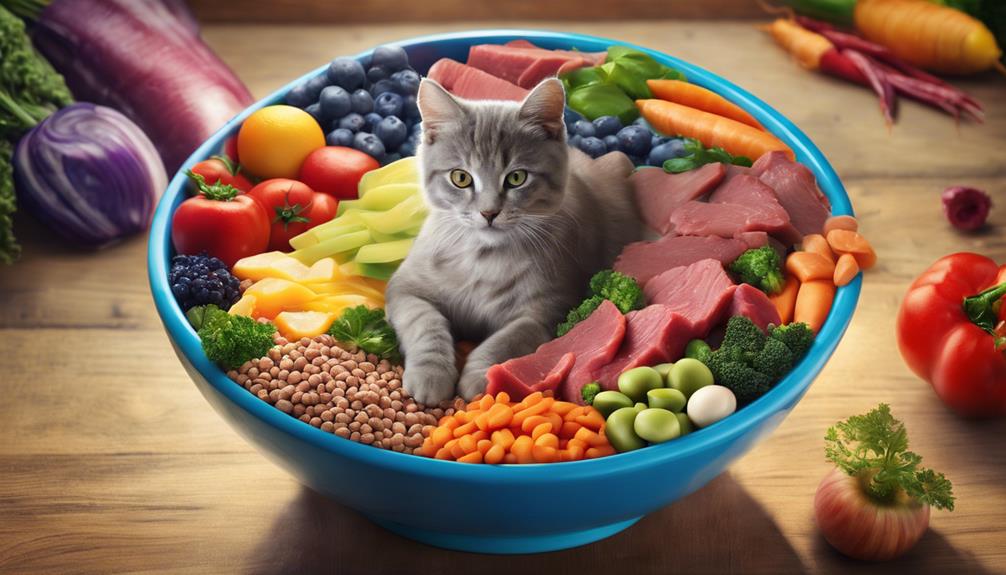
Raw feeding for cats offers a natural way to boost their immune system through essential nutrients and natural enzymes. Diets consisting of raw pet foods are rich in antioxidants, vitamins, and minerals that play an important role in supporting the immune system of our feline companions.
These essential nutrients help combat oxidative stress and enhance overall health and vitality. By feeding raw, we can provide our cats with higher levels of beneficial components that aid in immune health, helping to strengthen their immune response and potentially reducing the risk of infections and illnesses.
The minimal processing involved in raw diets helps preserve the natural integrity of the ingredients, ensuring that the immune-boosting properties remain intact. Choosing to feed raw can be a proactive measure in promoting a robust immune system in cats, supporting their well-being and longevity.
Behavioral Benefits of Raw Diet

Feeding your cat a raw diet can lead to improved activity levels and reduced aggression tendencies.
With nutrient-dense meals, cats feel more satisfied, which can result in a calmer demeanor.
Some cat owners have noticed a decrease in aggressive behaviors and more balanced energy levels in their feline companions when switching to a raw food diet.
Improved Activity Levels
Experiencing a boost in energy levels and increased playfulness is a common behavioral improvement observed in cats moving to a raw diet. It's amazing to witness how their activity levels soar and their playful behavior becomes more vibrant.
Here are some ways a raw diet can enhance your cat's activity and overall well-being:
- Improved Energy Levels: The high-quality nutrients in raw food provide the necessary fuel for increased activity.
- Enhanced Nutrient Absorption: Better absorption means more energy for playtime and exploration.
- Reduced Lethargy: Cats on a raw diet often show reduced lethargy and more enthusiasm for daily activities.
- Increased Playful Behavior: Raw feeding can lead to a more playful and engaged demeanor in your feline friend.
Reduced Aggression Tendencies
Moving to a raw diet can positively impact a cat's behavior by reducing aggression tendencies and promoting a calmer demeanor. Feeding high meat, complete and balanced raw diets provides numerous benefits for your feline friend. Cats on an ancestral diet rich in animal protein are less likely to exhibit aggressive behaviors.
The natural ingredients in raw food support better mental well-being, reducing mood swings and irritability. By eliminating artificial additives, raw feeding helps maintain emotional balance in cats. This contributes to a more harmonious household environment and a happier, more content kitty.
Opting for a raw diet can lead to improved brain function, potentially decreasing aggressive tendencies associated with nutritional deficiencies. Embrace the benefits of raw feeding for a calmer and more peaceful relationship with your beloved pet.
Raw Cat Food for Energy Levels
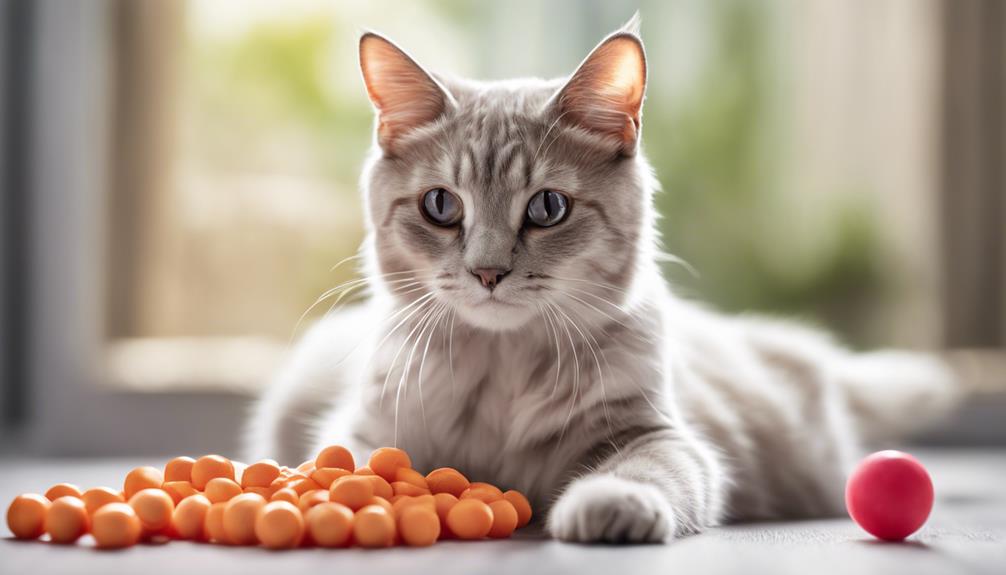
Raw cat food consumption can greatly enhance a feline's energy levels due to its high-quality protein content. Here are four ways raw cat food can boost your cat's energy levels:
- Natural Energy Boost: The high protein content in raw cat food provides a natural energy source for your feline friend, promoting vitality and playfulness.
- Sustained Energy: The easily digestible nature of raw food guarantees that your cat maintains healthy energy levels throughout the day, supporting overall well-being and activity.
- Increased Playfulness: Cats on a raw diet often display increased playfulness and vitality, indicating a significant improvement in their energy levels and overall mood.
- Muscle Development: Raw cat food supports muscle development and physical activity, contributing to higher energy levels and a healthier, more active lifestyle for your beloved pet.
Frequently Asked Questions
Is Raw Food Actually Better for Cats?
Feeding my feline raw food is like giving them a feast fit for royalty. The biologically appropriate nutrition in raw diets mimics their wild diet, promoting overall well-being. It's a choice I make with love.
Do Vets Recommend a Raw Diet for Cats?
I don't recommend a raw diet for cats. Vets express concerns about safety and nutritional balance with raw feeding. It's important to consult with a vet to guarantee your cat's health. Stick to commercial foods meeting AAFCO guidelines for complete nutrition.
How Often Should You Feed Your Cat Raw Food?
Feeding my cat raw food twice daily aligns with their nutritional requirements. Dividing the total amount into suitable portions guarantees they receive what they need. Consult a professional to tailor the feeding schedule to your cat's specific needs.
Do Cats Lose Weight on Raw Food Diet?
On a raw food diet, cats can lose weight due to high protein and low carbs. It helps maintain healthy weight by promoting lean muscle mass. The natural diet supports weight loss and improves metabolic functions.
How Does Feeding Raw Rabbit Cat Food Compare to Other Raw Cat Foods in Terms of Benefits?
Feeding raw rabbit cat food has unique advantages compared to other raw cat foods. The benefits of raw rabbit food include being a lean protein source, rich in essential nutrients, and easier for cats with food sensitivities to digest. This makes it an excellent choice for feline health and well-being.
Conclusion
To sum up, feeding your cat a raw diet offers numerous health benefits, from improved digestion to enhanced immune system support. By providing your feline friend with the nutritional advantages of raw food, you can help maintain their dental health, weight management, and joint health.
Additionally, a raw diet can boost energy levels and even improve your cat's behavior. Consider making the switch to raw cat food for a happier and healthier pet.





